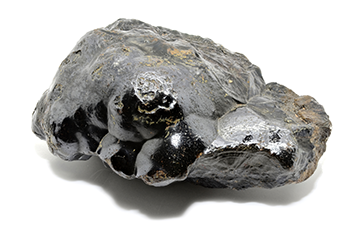
Lake Shore has also been collaborating with scientists from the University of Texas (UT) at Austin, along with other institutions, in work aimed at developing more economically feasible photogeneration technology. The goal of this PEC (photoelectrochemical cell) solar water-splitting research is to take a relatively abundant semiconductor material and synthesize it so as to enable the efficient conversion of solar energy to chemical energy in the form of clean hydrogen (H2). (For more about the sunlight harnessing/water-splitting process, the U.S. Department of Energy has a nice, succinct presentation on its website.)One promising candidate material for use as a photoelectrode in PEC water-splitting applications is hematite (α-Fe2O3). A mineral form of iron oxide, hematite is highly stable and abundant, with mineral deposits found throughout the world. But the metal oxide semiconductor alone is insufficient as a photoelectrode material. Thus, in order for water oxidation for solar-powered water splitting to occur, doping and synthesis of hematite crystals are required to enhance the material’s electrical properties. Since the 1970s, scientists have experimented with a number of doping and deposition techniques for hematite. The UT-led group synthesized single silicon-doped crystals (Si:Fe2O3) via chemical vapor transport, with Si incorporation on the order of 1019 cm-3.
The results of the work have been published in the latest Journal of Materials Chemistry (subscription required) and includes a description of how Lake Shore technology was used specifically to aid in the research. Four-point conductivity and AC field Hall effect measurements were taken in a Model 8404 Hall effect measurement system with an AC field Hall option, and DC field Hall effect experiments up to 9 T were performed using a Model 9709A superconducting magnet system. Similar to an earlier UT study, where researchers examined bismuth vanadate (BiVO4) for use in PEC applications, the AC field Hall measurement technique proved useful in the characterization of the Si:Fe2O3 because of the low mobilities involved, <1 cm2 V-1 s-1.
